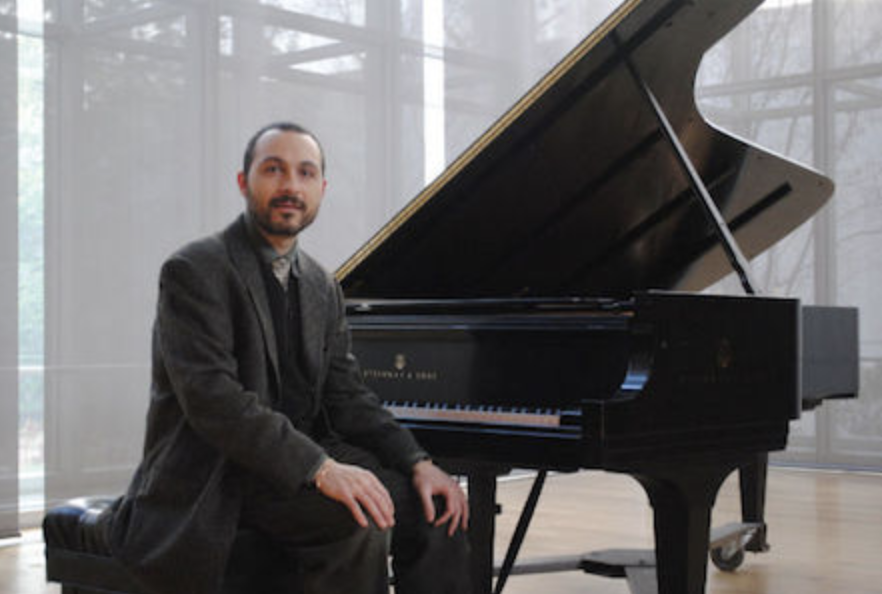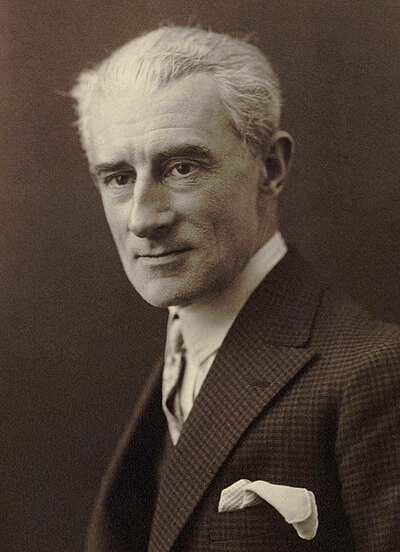by Mike Telin

On Friday, March 21 at 7:30 pm in Mixon Hall at the Cleveland Institute of Music, pianist Antonio Pompa-Baldi will present “Ravel at 150: A Celebration.” The program will feature the composer’s Gaspard de la nuit and the Piano Trio in a, as well as Roberto Piana’s Ravel en Rêve. The evening will also include the world premiere of Luca Moscardi’s Theme and Variations on the name Maurice Ravel. The program is presented as part of CIM’s Insiders Series. The concert is free, but reservations are required.
Pompa-Baldi, who serves as Distinguished Professor of Piano at CIM, said that composer/pianist Roberto Piana is one of his go-to collaborators. “I’ve played and recorded a lot of Roberto’s music,” he said during a recent telephone conversation. “I always go to him and say, ‘hey, would you like to do this or that?’ And to my wonderful fortune, he’s always enthusiastic about any idea that I have. Most recently he wrote some amazing opera fantasies on La bohème and Carmen, which I recorded for Steinway.”
When he began thinking about creating a Ravel project to celebrate the composer’s 150th birthday, Pompa-Baldi said that he wanted to create a program that would show the different facets of Ravel’s music, both in solo as well as in chamber repertoire. “I wanted to try to add to the canon by involving composers whose music I like to play. And to my surprise both Roberto and Luca responded yes.”
Although the title of Roberto Piana’s work for solo piano is Ravel en Rêve, “it is a theme and variations on one of the waltzes from Ravel’s Valses nobles et sentimentales. So instead of ‘Waltz Noble and Sentimental,’ it’s ‘Variations Noble and Sentimental.’”
Luca Moscardi’s Theme and Variations on the name Maurice Ravel for piano and cello is also a theme and variations. “Luca created a theme with a cryptogram, where he attached letters to musical notation in the same way that Ravel did when he composed the Menuet Hommage à Haydn, but these variations are on the name Maurice Ravel.”
Pompa-Baldi noted that both of the new works are roughly ten minutes in length, and they will complement the other works on the program. “I look forward to collaborating with my teaching colleagues violinist Ilya Kaler and cellist Si-Yan Darren Li on the Trio. And I’m very thankful that cellist Annamarie Wellems will be joining me for Luca’s piece. She’s very talented and while technically she is a student, she already has quite a career going.”

Pompa-Baldi pointed out that Ravel himself did not have large hands. “When Ravel set his hands on the keyboard, the most comfortable interval was probably a 7th or an octave. For me, I start from a comfortable 9th. So If you’re somebody with smaller hands you may feel a little bit more comfortable with his music. My case is totally opposite, so I’m constantly uncomfortable.”
Still, Pompa-Baldi finds Ravel’s music to be absolutely beautiful. As a composer, his gift for harmonic and melodic inventiveness is second to none, and his imaginative use of colors is genius. “Musically, everything makes perfect sense from a theoretical and harmonic standpoint. And the structure is absolutely perfect, you would not want to change anything from that point of view.”
The pianist added that Ravel possesses similar gifts to other great composers. “For example, with Bach, his music is so mathematically perfect and so human. And with Ravel’s music I find it to be the same — so perfect and yet it is so human.”
Published on ClevelandClassical.com March 17, 2025.
Click here for a printable copy of this article



